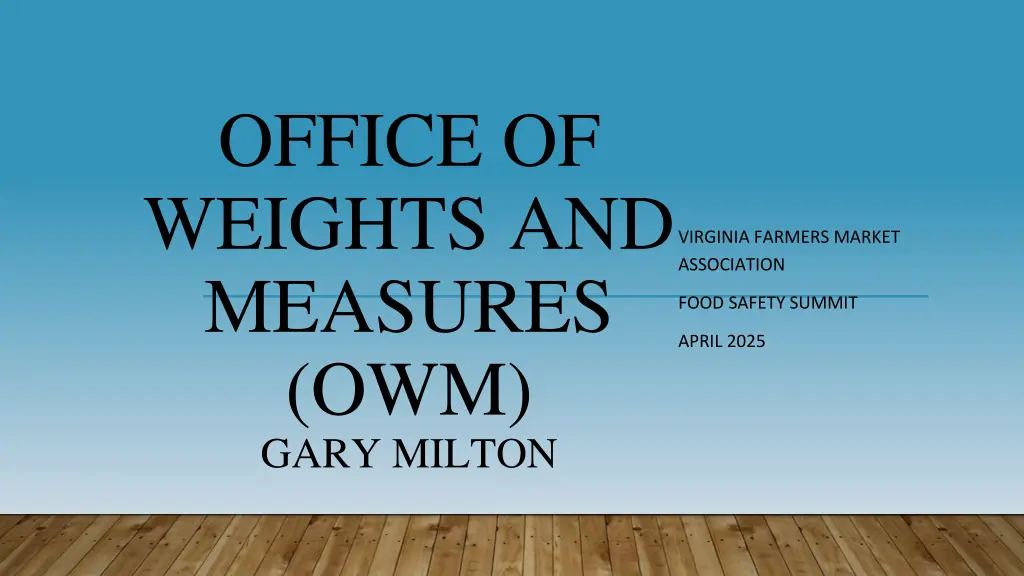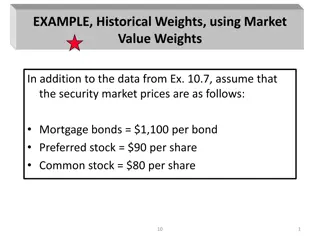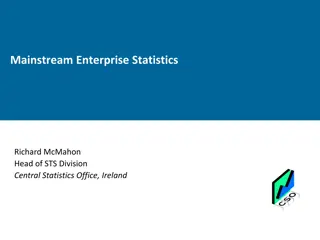
Virginia Farmers Market Association Food Safety Summit Insights
Discover the regulations and practices related to types of sale, labeling, scales, direct sale versus pre-packaged products, tare weight, net weight, and methods of sale as discussed at the Virginia Farmers Market Association Food Safety Summit in April 2025.
Download Presentation

Please find below an Image/Link to download the presentation.
The content on the website is provided AS IS for your information and personal use only. It may not be sold, licensed, or shared on other websites without obtaining consent from the author. If you encounter any issues during the download, it is possible that the publisher has removed the file from their server.
You are allowed to download the files provided on this website for personal or commercial use, subject to the condition that they are used lawfully. All files are the property of their respective owners.
The content on the website is provided AS IS for your information and personal use only. It may not be sold, licensed, or shared on other websites without obtaining consent from the author.
E N D
Presentation Transcript
OFFICE OF WEIGHTS AND MEASURES (OWM) GARY MILTON VIRGINIA FARMERS MARKET ASSOCIATION FOOD SAFETY SUMMIT APRIL 2025
TOPICS Types of Sale Methods of sale Labeling Scales
Direct sale vs. Pre-packaged Direct sale product weighed at the time of sale - items sold from bulk - consumer may select product TYPES OF SALE Pre-packaged product weighed, packaged and displayed for sale - consumer may select package of product
TYPES OF SALE DIRECT SALE PRE-PACKAGED Label required (more information later) No label required The package must contain the stated weight net quantity Items may be sold by weight, count, volume or measure Tare wt. must be taken if sold by wt. If weight, scales must be compliant with requirements (more information later)
TYPES OF SALE "Tare weight" means the weight of any wrapper, and any other vehicle, vessel, material or thing that is weighed with, but not an actual part of, a commodity sold by weight; thus, tare weight may include, in the case of a packaged commodity, a wrapper, container, packaging material, binding material, preservative, or the like, or in the case of bulk commodity, a vehicle, box, can, jar, or the like. "Net weight" means the net weight of a commodity, that is, the weight of the commodity exclusive of any wrapper, and any other material or thing weighed or packed with such commodity and excluding the vehicle or vessel containing the commodity.
METHODS OF SALE 3.2-5622. How certain commodities to be sold. Commodities in liquid form shall be sold only by liquid measure or by weight, and, except as otherwise provided in this chapter, commodities not in liquid form shall be sold by weight, by measure of length or area, or by count. Liquid commodities may be sold by weight, and commodities not in liquid form may be sold by count, only if such methods give accurate information as to the quantity of commodity sold. The provisions of this section shall not apply to: (i) commodities when sold for immediate consumption on the premises where sold; (ii) vegetables when sold by the head or bunch; (iii) commodities in containers standardized by law; (iv) commodities in package form when there exists a general consumer usage to express the quantity in some other manner; (v) concrete aggregates, concrete mixtures, and loose solid materials, including earth, soil, gravel and crushed stone, when sold by cubic measure; (vi) unprocessed vegetable and animal fertilizer when sold by cubic measure; or (vii) peanuts in large multiple bag lots being sold by cleaners or shellers to processors for further processing or repacking. The articles in clauses (i) through (vii) may be sold on a gross weight basis if agreed upon in writing by the mutual consent of the buyer and seller.
METHODS OF SALE 3.2-5622. How certain commodities to be sold. The Uniform Regulation for the Method of Sale of Commodities as adopted by the National Conference on Weights and Measures and published in National Institute of Standards and Technology Handbook 130, "Uniform Laws and Regulations," and supplements thereto or revisions thereof, shall apply to the method of sale of commodities in the Commonwealth, except insofar as modified, amended, or rejected by regulation issued by the Board.
LABELING 3.2-5623. Information to be shown on packages. Except as otherwise provided in this chapter, any commodity in package form, introduced or delivered for introduction into, or received in, intrastate commerce, kept for the purpose of sale, or offered or exposed for sale, shall bear on the outside of the package a definite, plain, and conspicuous declaration of: (i) the identity of the commodity in the package unless the same can easily be identified by an actual or prospective buyer through the wrapper or container; (ii) the net quantity of the contents in terms of weight, measure, or count; and (iii) in the case of any package kept, offered, or exposed for sale, or sold any place other than on the premises where packed, the name and place of business of the manufacturer, packer, or distributor. In connection with the declaration required under clause (ii) of this section the qualifying term "when packed," or words of similar import shall not be used, nor shall any term qualifying a unit of weight, measure, or count including "jumbo," "giant," "full" that tends to exaggerate the amount of commodity in a package be used. The Uniform Regulation for Packaging and Labeling as adopted by the National Conference on Weights and Measures and published in National Institute of Standards and Technology Handbook 130, "Uniform Laws and Regulations," and supplements thereto or revisions thereof, shall apply to the method of sale of commodities in the Commonwealth, except insofar as modified or rejected by regulation.
LABELING A declaration of Identity - What is the product A declaration of Quantity - How much product - weigh/volume/count A declaration of Responsibility - Who made/produced/responsible for the product
DECLARATION OF IDENTITY Appears on the principal display panel (PDP) and is generally parallel to the base of the package. (PDP) Principal Display Panel or Panels. That part, or those parts, of a label that is, or are, so designed as to most likely be displayed, presented, shown, or examined under normal and customary conditions of display and purchase. Wherever a principal display panel appears more than once on a package, all requirements pertaining to the principal display panel shall pertain to all such principal display panels. Is the name specified in, or required by, federal or state regulation; the common or usual name; or the generic name or other appropriate description including a statement of function.
DECLARATION OF QUANTITY Appears in the lower 30 % of the principal display panel and is generally parallel to the base of the package. Is prominently displayed in English (multi-lingual information is permitted). Is in a color that contrasts conspicuously with its background and has the required amount of free area. Appears in a style of type or lettering is bold, clear, and conspicuous and the type or lettering is proportional. Type or lettering meets the minimum height requirements. Generally, includes both SI Units and U.S. Customary Units. Uses only approved words, symbols or abbreviations for the SI and customary units in the singular form. Uses SI symbols that are not capitalized and SI symbols and customary unit abbreviations are not accompanied by periods or with other punctuation marks. Is declared in terms of the largest whole unit and SI units comply with the Rule of 1000. Quantities are rounded appropriately so quantity declarations are not overstated. Uses SI declarations that are displayed in 2 or 3 digits and SI declarations contain only decimal fractions. Does not appear in conjunction with an improper qualifying phrase. When necessary, is combined with appropriate additional quantity declarations.
DECLARATION OF RESPONSIBILITY Is displayed on packages kept, offered, or exposed for sale or sold at a location other than where packed. Includes the name and address of the manufacturer, the packer, or the distributor. Uses the actual corporate name or, when not incorporated, the name under which the business is conducted. Includes the city, state (or country), and ZIP code (or mailing code used in other countries). Includes the street address unless this information is listed in a readily accessible, widely published, and publicly available resource, including but not limited to a printed directory, electronic database, or Web site. Uses the address of the responsible party s principal place of business or the address of the location where the package was manufactured, packed, or distributed unless such address would be misleading. If the responsible party is not the manufacturer, then includes the party s connection with the package (i.e., Manufactured for and packed by, or Distributed by ).
SCALES Scales for direct sales in commercial trade Legal for Trade must meet certain standards set forth by the National Conference on Weights and Measures (NCWM) and must be certified by the National Type Evaluation Program (N.T.E.P.). Any commercial scale manufactured after January 1, 1986, must be labeled Class III if it is commercial quality. It will have an identification plate with the serial number, the manufacturer's name, a model number, maximum capacity, number of measurement divisions, and size of the smallest measurement. List of scale types that are generally: Not Legal for Trade baby scales, bathroom scales, restaurant portion scales, postal scales, kitchen scales
SCALES 3.2-5620. Specifications and tolerances for weighing and measuring devices. The specifications, tolerances, and regulations for commercial weighing and measuring devices, together with amendments thereto, as recommended by the National Institute of Standards and Technology, and published in the National Institute of Standards and Technology Handbook 44 and supplements thereto, or any publication revising, supplementing, or superseding Handbook 44, shall be the specifications, tolerances, and regulations for commercial weighing and measuring devices of the Commonwealth, except insofar as specifically modified, amended, or rejected by regulation issued by the Board. For purposes of this chapter, weights and measures shall be deemed to be in compliance with this chapter: (i) when they conform to all applicable requirements of Handbook 44 and supplements thereto, or any publication revising, supplementing, or superseding Handbook 44; or (ii) when they conform to any regulation adopted by the Board to modify, amend, or reject Handbook 44, as specified in this section. Other weights and measures shall not be in compliance.
SCALES National Institute of Standards and Technology (NIST) Handbook 44 G-A.1. Commercial and Law-Enforcement Equipment. These specifications, tolerances, and other technical requirements apply as follows: (1) To commercial weighing and measuring equipment; that is: (a) To weights and measures and weighing and measuring devices used or employed: 1. in establishing the size, quantity, extent, area, composition (limited to meat and poultry), constituent values (limited to grain), or measurement of quantities, things, produce, or articles for distribution or consumption, purchased, offered, or submitted for sale, hire, or award; G-UR.1.1. Suitability of Equipment. Commercial equipment shall be suitable for the service in which it is used with respect to elements of its design, including but not limited to its weighing capacity (for weighing devices), its computing capability (for computing devices), its rate of flow (for liquid-measuring devices), the character, number, size, and location of its indicating or recording elements, and the value of its smallest unit and unit prices.
SCALES G-S.1. Identification. All equipment, except weights and separate parts necessary to the measurement process but not having any metrological effect, shall be clearly and permanently marked for the purposes of identification with the following information: (a) the name, initials, or trademark of the manufacturer or distributor; (b) a model identifier that positively identifies the pattern or design of the device; (c) a nonrepetitive serial number, except for equipment with no moving or electronic component parts and software; (d) the current software version or revision identifier for not-built-for-purpose, software-based devices manufactured as of January 1, 2004, and all software-based devices (or equipment) manufactured as of January 1, 2022; (e) a National Type Evaluation Program (NTEP) Certificate of Conformance (CC) number or a corresponding CC Addendum Number for devices that have a CC. G-UR.3.3. Position of Equipment. A device or system equipped with a primary indicating element and used in direct sales, except for prescription scales, shall be positioned so that its indications may be accurately read and the weighing or measuring operation may be observed from some reasonable customer and operator position. The permissible distance between the equipment and a reasonable customer and operator position shall be determined in each case upon the basis of the individual circumstances, particularly the size and character of the indicating element.
SCALES Class III - All commercial weighing not otherwise specified, grain test scales, retail precious metals and semi-precious gem weighing, grain-hopper scales, animal scales, postal scales, vehicle on-board weighing systems with a capacity less than or equal to 30 000 lb, and scales used to determine laundry charges May be purchased from a Registered Service Agency (RSA) that can place the scale into service or purchased elsewhere by the user (internet). Should contact OWM to have inspected and tested for accuracy.
CONTACT Office of Weights and Measures 804-786-2476 OWM@vdacs.virginia.gov






















